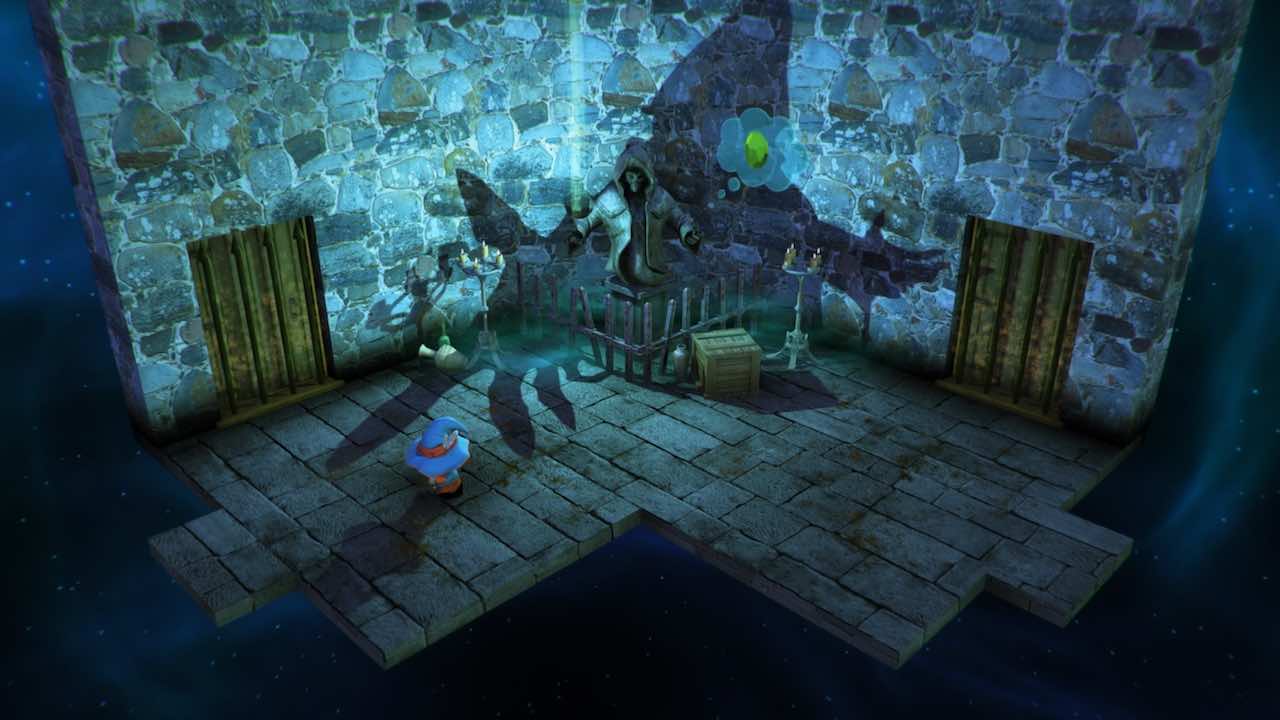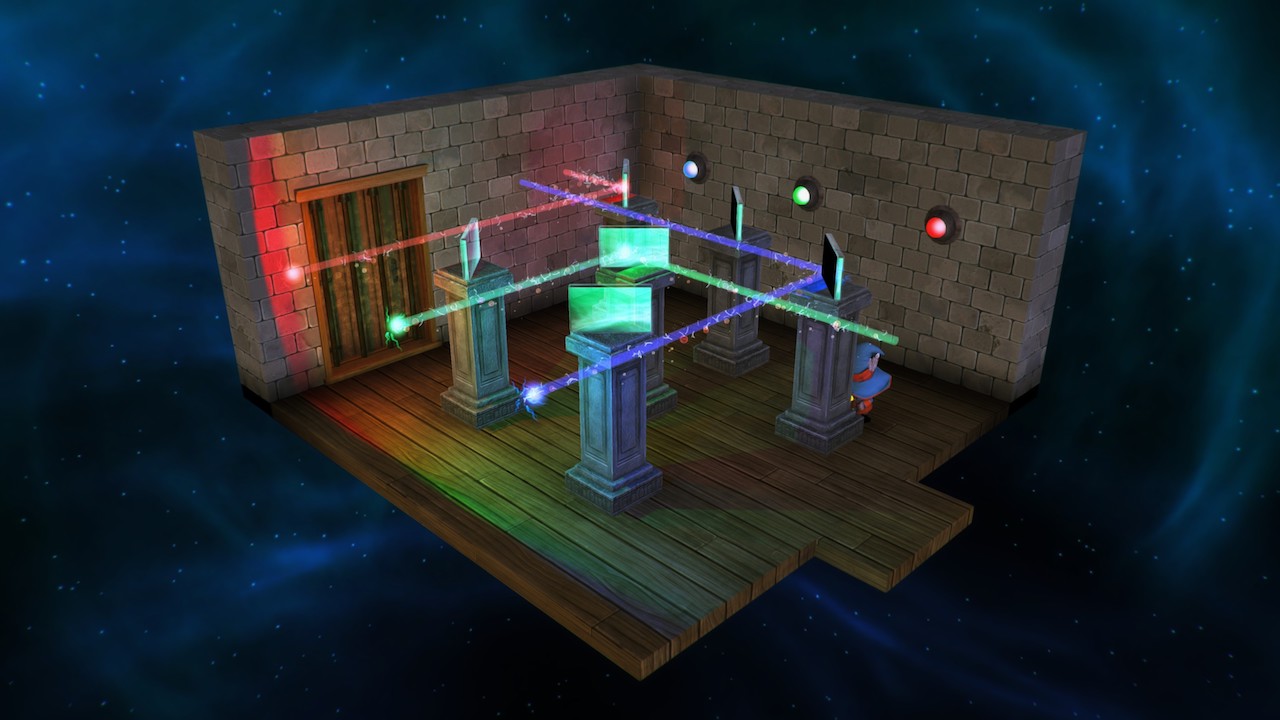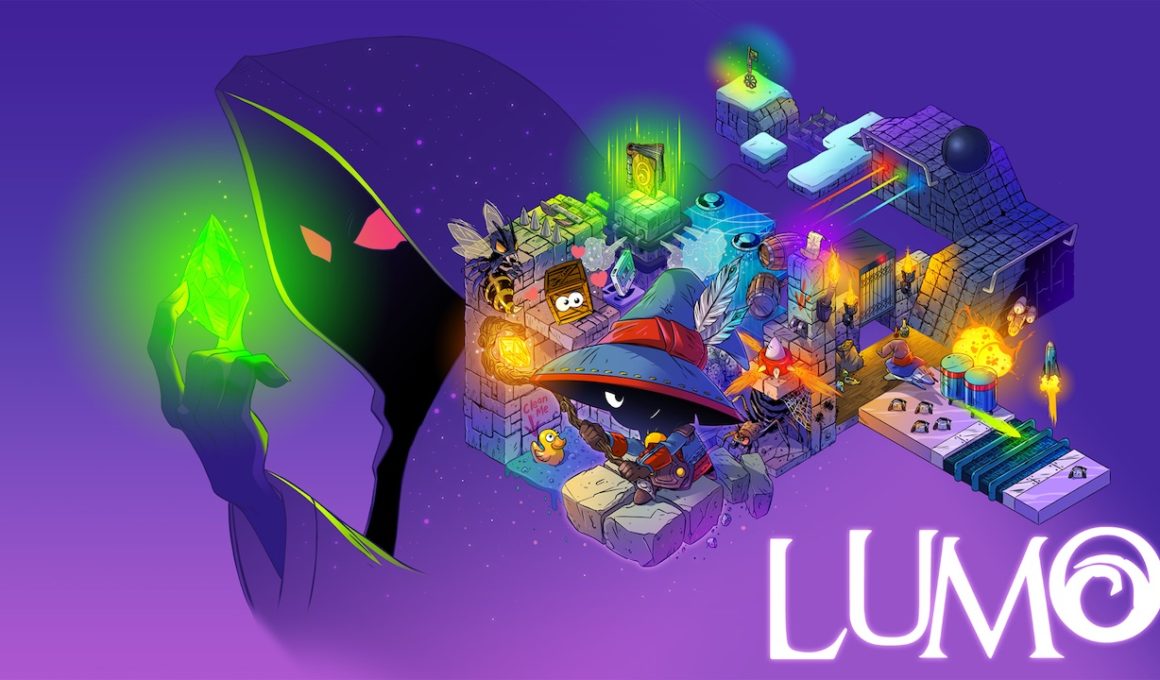Lumo knows what it wants to be. Borne in the mind of games industry veteran Gareth Noyce, heartwarming pangs of nostalgia await those that choose to brave this contemporary take on the isometric platformer.
Promising players the chance to witness the rebirth of a genre sounds like such an open-ended ambition, a marketing line knowingly crafted to rouse enthusiastically. But, in taking a moment to reflect on when it was something that I last encountered, I could only come up with Sonic 3D Blast on SEGA Saturn (which was some 21 years ago) and Captain Toad: Treasure Tracker on Wii U, which, despite the adorable character’s courageous heroics, I’m certain doesn’t really count seeing as the camera angle isn’t firmly fixed in place.

Lumo, without question, is unashamed in its throwbacks to yesteryear. Your adventure starts as a young boy (or girl) who excitedly dashes into a retro game fair, where a malfunctioning SpecEye scans and miraculously beams you directly into a game. It’s a wordless introduction, but, before then, players will choose between Adventure or Old School modes – determining whether they have infinite lives, access to a map, can save their progress, and will race against the clock or not.
It can be argued that Lumo is best experienced without the fear of your adventure being cut short, in letting the player become lost in a world that lends as much joy in what you discover as when you overcome a brain-bending platforming challenge. It’s also a game that is crammed with references, whether that be the jumping ability that you retrieve early on looking reminiscent of an Agility Orb in Crackdown 2 as a nod to Noyce’s time at Ruffian Games, or the room in which you choose how your character moves even styled after the Training Stage in Street Fighter IV.
This feeds the curiosity that you have for your labyrinthine surroundings, with your adventure seeing you wander around more than 400 rooms that are scattered between four zones. Secrets cassette tapes more often than not require that you find a way to leap out of the confines of a room to uncover where they are hidden, while rubber ducks can be recklessly bounced on to be retrieved. With a handy book tracking your progress, there’s enough for completionists to hunt out. That death has no penalty in Adventure mode only pushes you to experiment to find them.

Beyond that, your time with Lumo will see you dodge spikes, leap over flames, shift blocks to leap to out of reach doorways, or turn a spanner to activate a conveyor belt to progress. Soon you will be rolling around atop metallic balls, floating high above fans, and bouncing on magical bubbles, and it is this constant creativity that will spur you forward in wondering what Noyce will throw at you next.
In the game’s presentation, it is the lighting that can impress on repeat occasion – especially once the wand has been collected, which surrounds the player’s wizardly character with an ominous glow that fights back the darkness and, more importantly, sees spiders scurry away from you. But, the graphical fidelity is noticeably less sharp than on other platforms and is far brighter, too – which is annoying seeing as this can’t be changed in the game’s options. Whether it can be improved with a software update is unclear.
Imperfection does not readily detract from the successes that Lumo achieves, a heartfelt love letter to the revered golden era of gaming that has been created with thoughtful ingenuity. The isometric camera angle can frustrate in how it can lead to imprecision, but it’s hard not to come away charmed by the game’s enchanting design.
Version Tested: Nintendo Switch
Review copy provided by Rising Star Games





